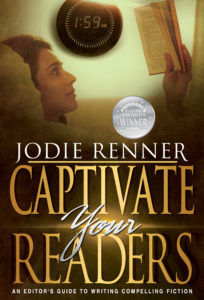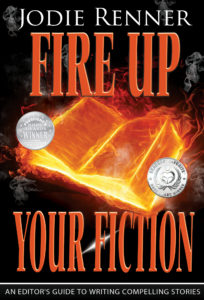 Many new writers struggle with how to emphasize words in fiction. It’s tempting to stick a word in ALL CAPS.
Many new writers struggle with how to emphasize words in fiction. It’s tempting to stick a word in ALL CAPS.
Please resist that urge. Yes, all-caps draws the reader’s attention, but not in a good way. All-caps become annoying after a while.
In fact, a 1955 study found that all-caps slowed reading speed by 9.5% over a five-minute period.
For example:
“I AM NOT HYSTERICAL!”
Notice how all the letters blend together in all-caps? It’s difficult to read. Imagine an entire novel littered with all-caps? In dialogue, it’s even more exhausting and amateurish.
If your character is shouting, use one exclamation point—not three!!!—or show us with a body cue.
“I am not hysterical!”
Or…
She slammed her fist on the table. “I am not hysterical!”
The combination of body cue, italicizing not, and the exclamation mark show the reader she is hysterical.
To the best of my recollection, I only used all-caps once in nineteen books. In my latest psychological thriller that releases at the end of this month (Yay!), the MC finds an engraved invitation, and I used italicized all-caps to show the heading across the front. Because all-caps is so offensive and jarring, I took special care to break up the text with an em dash, spacing above and below it, and double-tabbed to set it apart from the narrative. Offensive and jarring was exactly what I was going for, so all-caps worked in this case.
If you can think of another exception, please share in the comments.
What about changing the font to indicate emphasis?
I know it’s easy to change fonts these days, but the end result doesn’t enhance the reading experience. If anything, it pulls the reader out of the story. Please, stop. Let the writing speak for itself. If it can’t, then the problem is the writing, not the font.
What about bold to emphasize a word?
The short answer is no. The reading experience isn’t enhanced by bold, either. Both bold and all-caps look like the author’s screaming for attention.
What are we left with?
Italics. Yes, but don’t overdo it. Italics work best for emphasis when used sparingly. Like all-caps and bold, if used too much the eye passes right over the words we want emphasized.
We do have one other trick.
Em dashes. I love the little suckers. Maybe too much. 😉 At least I’m in good company. Jim professed his love for the em dash on Valentine’s Day last year.
“It is a crisp, efficient dash used to set off a word or clause for emphasis or additional information.”
Couldn’t say it any better. It’s a beloved, versatile punctuation mark.
Hope he doesn’t mind if I steal his example from Romeo’s Hammer:
So what about the lack of clothing? A love scene gone bad? Someone who had been with her while she was drinking—or drugging—herself? Her condition when I found her was such that she had to have come from one of the beach houses. Access to the sand is cut off all along PCH. She didn’t wander down from the street.
See how drugging stands right out? The em dashes draw the eye right to it. They tell us to pay attention. They pique interest. They emphasize.
With italics and em dashes, we have all the tools we need to emphasize words. Now, go forth and finish that novel.
For fun, share a sentence from your WIP, published work, or a book you’re reading that shows how a word–or words–are emphasized. Don’t forget to include the title!


